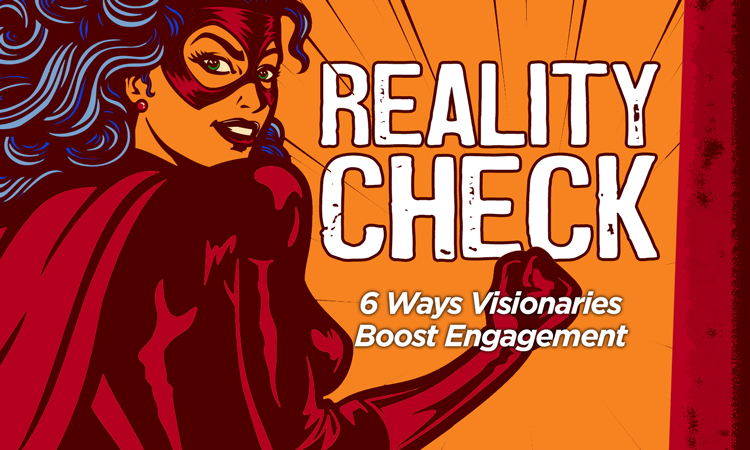Creator of digital platform meetingpages complete event planning directory and resource delivering leads and national, regional and local exposure for event venues, suppliers and destinations in MN, WI, IA & CO markets. In her free time, this 19 year industry veteran enjoys dance, group fitness, and training her young golden retriever dog in competition obedience and confirmation.
Reality Check: 6 Ways Visionaries Boost Engagement
Meetings are a huge contributor to successful communication, but they’re not easy to plan or manage and engage attendees. Engagement isn’t just about getting the attendee into the meeting, but rather breaking through the noise of whatever may be going on specifically for each person so they can focus their will on the collective goals while making connections that matter long after the meeting is over. To help, here are 6 ways visionaries boost engagement:
-
Be Prepared. Don’t just aim to come prepared but focus on preparing anyone who will attend the meeting, including other team members and customers. You can achieve this by sharing the agenda and any support documents ahead of time so attendees can even get involved beforehand by making topic suggestions for the meeting agenda. For most the vision for engagement boils down to “attendees that pay attention”. Yet to truly engage in a meeting — beyond just paying attention—people need an active part to play and a reason to be there. They need a job to do. These jobs can be simple, like raising a hand to indicate agreement, or helping the group keep track of time. These jobs can also be complex, like they are when participating in a collaborative Workshop. Start by only inviting those you explicitly expect to actively participate.
-
Ask for Engagement. Don’t assume your audience knows this. The simplest way to engage someone is by asking a question, then waiting for an answer. This works well in a one-on-one dialogue. A better structure for groups is a question-go around. Here, the meeting leader goes around the room and asks each person to answer the question one at a time to ensure all participants contribute. Whatever the tactic, if you ask for engagement, make sure there is time for attendees to give it to you. After all, making space for engagement in a meeting means that each person must have the opportunity to contribute. Don’t forget to acknowledge contributions and use what you receive.
-
Know Who Your Audience Is. Do all necessary research on the prospect and/or industry beforehand, so that your meeting time can be an asset that validates your clients’ trip to your offices or to your meeting attendees. One exercise for understanding a potential customer’s profile is to complete a SWOT analysis. Yes, just like in your college marketing class. Who are you talking to? What problems are they having? What are their likes and dislikes? How many times have they met with your organization before and what were the results? Use this information to personalize the experience. If you already know some details about the customer or audience, it makes it easier to choose a talking point and make casual conversation transition into business discussion.
-
Concisely Communicate Your Agenda. This one should be obvious. You only have a small window of time available to make your point—don’t waste it and let the audience know right away what’s in it for them. Setting expectations is a key ingredient for an engaging meeting. If everyone in the meeting is on the same page at the start, then everyone is better prepared to contribute, ask questions, and be engaged. Better yet, send out the agenda as soon as possible so attendees can adequately prepare. Make sure only key stakeholders are invited to the meeting to keep the conversation on-track. Most importantly, keep your meetings and events short. Nothing is duller than another meeting or event to have people sit there and be talked to!
-
Be a Visual Presenter. Be interactive whenever possible. If you’re using a virtual platform, share your screen. This tactic engages your audience and provides them with something to focus on as the meeting progresses. As your audience follows along, this helps reinforce the message you’re delivering and keeps the meeting productive. If you are hosting a meeting in person, utilize white boards or large sticky notes as you capture the meeting notes. Moving around the room helps the meeting feel less static and boring, and these tools can be helpful to your visual learners in the audience.
-
Save Time for Real-Time Notifications & Audience Feedback. Keep attendees focused by sharing targeted insights and updates before, during and after the meeting. The best way to go about it is through real-time notifications and alerts. To make it happen, consider using tech tools such as automated reminders, quick one-click satisfaction surveys or even voice dictation from an audience response provider. Find ways to improve the feedback process and cut down on excess noise. This will conserve time for you and your team, while affording attendees ample time to share all their thoughts.










